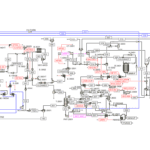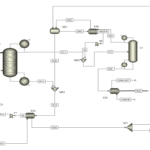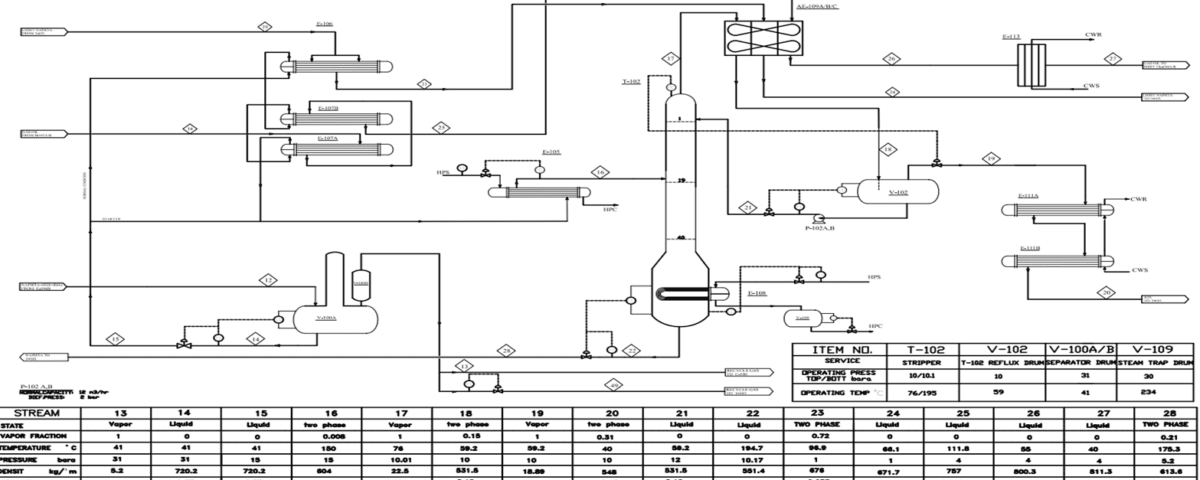Introduction
Gas condensate, as one of the most valuable hydrocarbon resources, holds a prominent position in the global energy and petrochemical industries. Extracted primarily from gas fields, it comprises a mixture of light hydrocarbons (such as methane and ethane) and heavier components (like pentane and hexane). After processing, gas condensate is converted into high-value products such as gasoline, kerosene, diesel, and petrochemical feedstocks, playing a critical role in energy supply and downstream industrial development.
With the growing global demand for energy and petrochemical products, there is an increasing need for innovative and flexible solutions for gas condensate processing. Traditional large-scale refineries, while capable of handling substantial feedstock volumes, often prove economically unfeasible for remote areas or small-scale gas fields due to high capital and operational costs. This is where small-scale refineries, commonly known as mini refineries, emerge as an economical and efficient alternative.
Mini refineries, typically designed with capacities ranging from 1,000 to 30,000 barrels per day, enable gas condensate processing near extraction sites. These facilities not only reduce raw material transportation costs but also leverage advanced technologies to produce high-quality, diverse products. Furthermore, their high flexibility allows adaptation to market fluctuations and local demands, enhancing profitability and minimizing economic risks.
Project Overview
This project focuses on the design and feasibility study of a mini refinery with capacities of 5,000 and 10,000 barrels per year, examining the technical, economic, and environmental aspects of gas condensate processing. The primary objective is to provide an optimized solution for converting gas condensate into high-value products with minimal costs and maximum efficiency. This project not only marks a significant step towards advancing the national refining industry but also serves as a model for similar projects globally.
Project Objectives
The project aims to design and assess the feasibility of a mini refinery for processing gas condensate with capacities of 5,000 and 10,000 barrels per year. Positioned as an innovative and cost-effective solution, it seeks to address the needs of the refining industry in remote areas and small-scale gas fields. The key objectives are as follows:
-
Economic Evaluation
A critical goal is to conduct a detailed analysis of capital and operational expenditures to determine the project’s economic viability. This includes:
- Estimating initial costs: land acquisition, equipment, installation, and commissioning.
- Operational costs: energy, labor, maintenance, and repair expenses.
- Return on Investment (ROI) analysis: calculating payback period and project profitability.
- Comparison with large-scale refineries: assessing the economic advantages of mini refineries over traditional ones.
This evaluation ensures the project is not only technically feasible but also economically viable and profitable.
-
Process Optimization
Another objective is to optimize the gas condensate refining process using advanced simulation and design techniques, including:
- Reducing energy consumption: employing efficient heat exchangers and recovering energy from output streams.
- Enhancing process efficiency: improving the separation of light and heavy components for higher-quality products.
- Minimizing waste: reducing by-products and reusing side streams.
- Incorporating advanced technologies: utilizing state-of-the-art control systems and process automation.
These optimizations aim to lower operational costs and increase the project’s competitiveness.
-
Technical Analysis
A comprehensive review of the technical and operational parameters of the refinery units is essential. This includes:
- Process unit design: distillation columns, heat exchangers, and reactors.
- Operating conditions: temperature, pressure, and material flow rates at each process stage.
- Safety analysis: identifying potential risks and implementing mitigation strategies.
- Product quality assurance: ensuring final products meet international standards.
These analyses guarantee optimal and stable performance of the refinery units.
-
Sustainable Design
In line with social and environmental responsibility, the project aims to reduce environmental impacts and enhance process sustainability. Objectives include:
- Reducing greenhouse gas emissions: optimizing energy use and adopting low-carbon technologies.
- Waste management: recovering and reusing process waste materials.
- Utilizing renewable resources: exploring solar and wind energy integration.
- Water conservation: optimizing cooling systems and water recovery processes.
This sustainable approach not only minimizes environmental impacts but also increases the project’s social and economic acceptance.
Methodology
The project was systematically designed and executed to ensure technical, economic, and environmental optimization. The main methodological stages include:
-
Process Simulation in Aspen Plus
Process simulation forms the project’s core, utilizing Aspen Plus, a leading tool in the oil and gas industry. Key simulation steps:
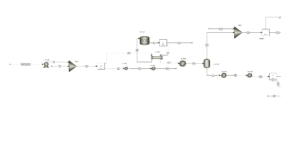
- Separation of light and heavy components: advanced distillation and separation units isolate various hydrocarbons for high-value product generation.
- Energy optimization: analyzing thermal and cooling flows to enhance energy efficiency through effective heat exchangers and waste heat recovery.
- Chemical reaction analysis: evaluating processes like hydrocracking and catalytic reforming to improve product quality.
-
Process Flow Diagram (PFD) Analysis
The PFD serves as the process roadmap, detailing every stage from input to output:
- Core units: distillation towers, heat exchangers, reactors, and other critical equipment.
- Material flows: mapping raw material movement, intermediate streams, and final products to optimize transfers and minimize losses.
- Process control: identifying key control points for temperature, pressure, and flow to ensure optimal, safe operations.
-
3D Layout of Industrial Equipment
A 3D model illustrates precise equipment arrangements:
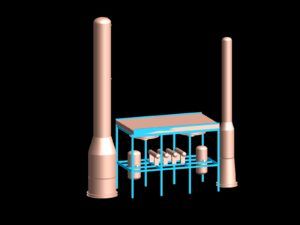
- Physical layout: positioning towers, tanks, and heat exchangers for operational efficiency.
- Safety analysis: ensuring safe distances, emergency access routes, and maintenance feasibility.
- Space optimization: minimizing unused areas and enhancing operational effectiveness to reduce construction costs and boost productivity.
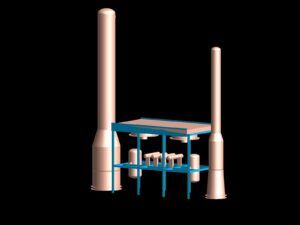
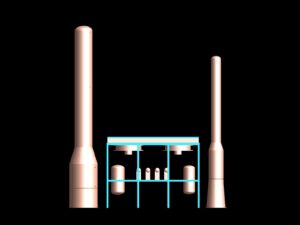
This comprehensive approach enables in-depth analysis of various aspects of gas condensate refining, providing a scientific foundation for technical and economic decisions. Through advanced simulations, PFD analysis, and 3D modeling, the project is recognized as a reliable blueprint for the refining industry, serving as a reference for future projects.
Key Results
The project results demonstrate success in meeting objectives and offering effective operational solutions for gas condensate refinery design and management:
- Process simulation: improved efficiency via optimized distillation units and operational conditions, significant energy savings through heat recovery, and enhanced product quality with reduced impurities.
- Economic analysis: detailed CAPEX and OPEX estimates confirming cost-effectiveness, economic sensitivity analysis highlighting profitability under price fluctuations, and an attractive IRR with a short payback period.
- Technical design: comprehensive PFD covering all refining stages, modular equipment design for scalability and flexibility, and improved equipment layout reducing pressure drops and enhancing operational safety.
- Environmental benefits: reduced greenhouse gas emissions through energy optimization, efficient waste and wastewater management, and resource conservation, including lower water and chemical usage.
These findings confirm the project’s technical and economic success while minimizing environmental impacts, contributing significantly to sustainable energy industry development.
Conclusion
The design and feasibility study of a gas condensate refinery with 5,000 and 10,000 barrels per year capacities thoroughly examined economic, technical, and environmental aspects. The results highlight not only strong economic justification but also outstanding process efficiency and environmental sustainability. Optimized process design, efficient equipment selection, and adherence to safety and environmental principles make this project a benchmark in gas condensate refining.
These achievements demonstrate the project’s scalability and adaptability to diverse market conditions, with a strong focus on energy efficiency and environmental protection, positioning it towards sustainable development and environmental stewardship.
